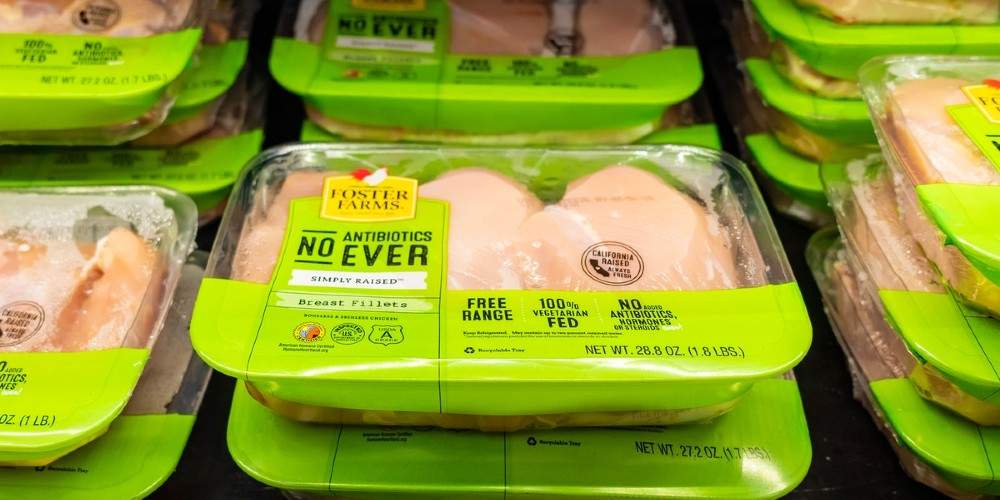Harvard MBA’s hoeing the corn… in exchange for gruel.There’s many ways to collect “rent” besides cash. Hot wimmins to do house work, cleaning, etc. emphasis on etc.
Share cropping may make a comeback!
Sirhr

Follow along with the video below to see how to install our site as a web app on your home screen.
Note: This feature may not be available in some browsers.
Harvard MBA’s hoeing the corn… in exchange for gruel.There’s many ways to collect “rent” besides cash. Hot wimmins to do house work, cleaning, etc. emphasis on etc.
So saw an interesting piece while channel surfing about 'crop abandonment' rates. Maybe someone who is a professional 'large scale' farmer can comment.
But what I gather is that a lot of crops were planted, rice and wheat in particular, before the prices on everything totally spiked. Farm planting loans did not account for the price hikes. So a lot of farmers can't afford to buy the diesel and chemicals needed to bring the crops to maturity and harvest them. Plus concerns about commodities prices (are other countries having good years?). Anyway, the result is that they are not going to maintain or harvest crops. The math says it's better to let them die in the fields than to harvest.
Also on Thursday something called the "Acreage" report is coming out Thursday from Ag Dept. It forecasts the harvest, how much is planted, how much is fallow, looks at abandonment, etc. And is predicted to be a bloodbath and predicting very serious reductions in output.
May be interpreting this wrong... but I am sure some of you follow this stuff for a living. Does 'Thursday' mean anything? Or is it just stats that don't translate to the grocery aisle? Seems like it would. But what do I know?
Sirhr
That's good news... and plays into the narrative that 'one doesn't have to have a food shortage, one merely needs to create the appearance of one... to incite concern, hoarding or panic.I was raised on a farm. Worked some very large places in college. My wife's family owns several irrigated sections.
There are three models.
1. Farmer has cash for inputs. Or has inputs banked or contracted for.
2. Farmer has cash and a loan for input. Bank owns part of crop.
3. Farmer has cash for inputs. Land owner and farmer split costs and crop.
Once the crop is in the ground, its pretty much a done deal. Given the high price of grain now even a marginal crop will get harvested.
If a farmer goes tits up, then the bank or land owner will contract to have the crop harvested OR find another farmer to protect its interests.
Coming back from the Panhandle I saw that most dryland wheat was up and a lot of fields were getting planted with Sorghum as a second crop. I saw no lodged crops.
All of my wife's sections have the wheat up and are now planted corn that is contracted for green chop.
I also saw a lot of fields are getting baled for wheat or other straw.
Further north, all the cattle and farms up to South Dakota looked good and productive. Lots of tractors out working.
In short, I just don't see what you claim.
I poked around after my last post...
Looked for "hog scalding kettle." Good Lord, an old cast iron kettle is expensive. You could buy a cheap car for what they go for.
Wound up on a homesteading forum and someone said they use an old bathtub. Duh! I should've thought of that.
So there are options to get a guy by. Or you could just skin 'em out. But during starving times it might be a good thing to utilize every edible bit you can.
Lots of options.
Mike
And pink salt.City slicker..
Weld one about 5 feet long and 2.5 feet wide and 3 feet deep. Build a frame out of angle iron. Weld on sheet metal. Fill about halfway with water. Find and weld the leaks. Add baffles on bottom and side. Make a lid. Water will boil faster.
Wait for a day where night will be below 32 degrees. Set it on some drill stem. Build a fire. Fill half full. When it hits 200 degrees:
1. Shoot pigs between the eyes. Bleed from neck while heart is pumping. See 5 below. A front loader or tripod helps.
2. Put hooks/rods into front and back hocks
3. Lower into scalding water for a few minutes. You want the pig submerged.
4. Remove and then scrape hard to the hair off. Wash with a hose. Be sure to wear cotton or heavy gloves that you can wash.
5. Dress. Best way is to use a tripod and a gut buggy. You can weld a tripod and a buggy one up with a boat come along.
6. Wash again.
7. Break down the carcass. Its pretty easy. Be sure to set aside the fat.
8. CLEAN the tub with soap/water/clorox.
9. Drop fatty parts into tub and render down. Scoop off fat and put into CLEAN jars/tins and let cool with lids on. (Lard)
10. Figure out what cuts you will smoke/cure and get those into the salt box.
11. Wrap cuts. Label. Freeze.
12. Continue to cure then smoke bacon/hams.
Keep in mind that the meat must land on CLEAN surfaces and then be promptly frozen or dropped into a salt box. Wash your hands at each step of the process and use medical gloves.
My dad and me and my uncle could do 10 x 400 lb pigs in a day. I've done two in a day by myself with time to spare.
It helps to have some tables with plastic on them laid end to end for the final cutting of the cuts/packing.
Having a two good saws, good knives, vaccuum packer, helps a ton.
Start small. Do a little guy first. Maybe 80 to 100 lbs to get your process down.
This was over Mcnuggets...just wait till they can't get any McDonalds.
I get it. My post was more for folks who don't have the options/equipment you listed. We drag home "junk" that may have use... East side of the barn looks like a scrap yard but we have it. A lot of folks don't. Sometimes folks may have to improvise to get by.City slicker..
Weld one about 5 feet long and 2.5 feet wide and 3 feet deep. Build a frame out of angle iron. Weld on sheet metal. Fill about halfway with water. Find and weld the leaks. Add baffles on bottom and side. Make a lid. Water will boil faster.
Wait for a day where night will be below 32 degrees. Set it on some drill stem. Build a fire. Fill half full. When it hits 200 degrees:
1. Shoot pigs between the eyes. Bleed from neck while heart is pumping. See 5 below. A front loader or tripod helps.
2. Put hooks/rods into front and back hocks
3. Lower into scalding water for a few minutes. You want the pig submerged.
4. Remove and then scrape hard to the hair off. Wash with a hose. Be sure to wear cotton or heavy gloves that you can wash.
5. Dress. Best way is to use a tripod and a gut buggy. You can weld a tripod and a buggy one up with a boat come along.
6. Wash again.
7. Break down the carcass. Its pretty easy. Be sure to set aside the fat.
8. CLEAN the tub with soap/water/clorox.
9. Drop fatty parts into tub and render down. Scoop off fat and put into CLEAN jars/tins and let cool with lids on. (Lard)
10. Figure out what cuts you will smoke/cure and get those into the salt box.
11. Wrap cuts. Label. Freeze.
12. Continue to cure then smoke bacon/hams.
Keep in mind that the meat must land on CLEAN surfaces and then be promptly frozen or dropped into a salt box. Wash your hands at each step of the process and use medical gloves.
My dad and me and my uncle could do 10 x 400 lb pigs in a day. I've done two in a day by myself with time to spare.
It helps to have some tables with plastic on them laid end to end for the final cutting of the cuts/packing.
Having a two good saws, good knives, vaccuum packer, helps a ton.
Start small. Do a little guy first. Maybe 80 to 100 lbs to get your process down.
Most folks only have a few days of groceries, a salt shaker of salt, pay check to pay check and can't keep scrap iron or a welder in a 1 bedroom apartment.I get it. My post was more for folks who don't have the options/equipment you listed. We drag home "junk" that may have use... East side of the barn looks like a scrap yard but we have it. A lot of folks don't. Sometimes folks may have to improvise to get by.
You mentioned salt... That will be a valuable commodity. Best to have a good supply on hand and know where to get more.
Mike
Most folksMost folks only have a few days of groceries, a salt shaker of salt, pay check to pay check and can't keep scrap iron or a welder in a 1 bedroom apartment.
Most folks believe in the thin veneer we jokingly call civilization.Most folks only have a few days of groceries, a salt shaker of salt, pay check to pay check and can't keep scrap iron or a welder in a 1 bedroom apartment.
Don't take much to peal veneer.... Leave it out in the elements for a while and it will peel itself.Most folks believe in the thin veneer we jokingly call civilization.
Mike
There have been some other comments about the major chicken growers / suppliers / processors. They are well tuned to the supply and demand issues. The growers are under contract and can be cut off with little notice. An industry that has weathered many storms. A sign of the times to come.Chicken producer in California ( foster ) reports chicken feed shortages so bad that they are considering killing off millions of chickens.
This may be related to the rail embargo in effect denying railroad car entering California. This is due to railroad congestion across the west.

Which is a direct result of billionaire investment groups buying railroads and shutting off services.Chicken producer in California ( foster ) reports chicken feed shortages so bad that they are considering killing off millions of chickens.
This may be related to the rail embargo in effect denying railroad car entering California. This is due to railroad congestion across the west.
It's even affecting Whataburgers now:
It's even affecting Whataburgers now:

It's even affecting Whataburgers now:
Guy behind the counter should have givin her this .This is what we get when they grow up with no consequences for their actions.
It's even affecting Whataburgers now:

It's even affecting Whataburgers now:


link - linkIt wasn't enough to get blow up manufacturing plants now they are working on refineries and fossil fuel processing plants - second explosion in a week now happening.

Texas Pipeline targeted:
Yep, nothing new. The pipeline in Virginia and North Carolina that we did repairs on was ran in the late 50's if I remember correctly. You can see videos online of that pipeline near Appomattox, it had a blow out the year before I went out to help.Probably external corrosion, poor coating.
static electricity...What causes it to catch fire in an open field like that? Does metal pipe breaking open create a hot spark?
pipe bomb, c4, handgrenade, moltov cocktail.static electricity...
Fuel, Oxygen, Ignition
9mm , it does more than just blow out lungspipe bomb, c4, handgrenade, moltov cocktail.
All the loving .gov could muster.
They don't always flash. Just guessing but that pipe was probably operating in the 550-750psi range, when it let go, it is like an explosion with or w/o fire because it probably blew down 8-15 miles of pipe. Rocks, parts of pipe, static electricity, etc could have ignited it. I'm just glat it wasn't a farmer working that wet it off. It will depressure VERY quickly as normally 1-2+ 40ft joints of pipe open up. The original defect may have only inches or feet, but once it goes it will rip parent pipe and/or possible follow the long seam. What probably stopped propagation is a circumferential weld.What causes it to catch fire in an open field like that? Does metal pipe breaking open create a hot spark?
